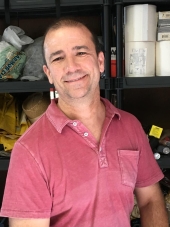My husband and I have come back to this site again and again for the amazing information and stories that fill us with hope that our dreams can be realized too. We have been planning a seemingly impossible venture for quite some time now, but have been struggling with how to start, whether there would be enough people interested to get it started and help it continue to run smoothly, and how to overcome the initial financial obstacles.
After all this time, it just now occurred to us (face palm, we know) that this is probably the best place to come to to explain our vision without the opposition or blank stares we are faced with when trying to talk to others who still consider off-grid living, intentional communities, and "all that hippie stuff" to be foolish and a waste of our time.
We have been planning this out for the better part of 9 months and need some direction to continue the forward momentum.
Our dream is an intentional community that not only helps those who wish to escape the 9-5, plugged into the system life, but also those in desperate need of help. We want our community to help homeless veterans as well as indigent families and to help start/maintain an animal rescue center that would support homeless cats and dogs as well as retired livestock.
We plan on the community being vegan as it seems the best way to keep costs down and it fits with our personal choices/beliefs as well. We have been learning all sorts of ways to make pretty much anything a meat-lover could want with veggies though and Eric is an amazing chef with 10+ years experience behind him so that helps too!

We have located cheap land that is able to be leased to own, which fits with our budget, although they did say they really only want one structure built on the land until it is paid off. The good news is that there are absolutely no zoning laws where we are looking, so it makes what we would like to do much easier than having to work around regulations and fees.
The bad news is it is basically a desert climate with some tracts having more vegetation than others, although we have been looking into desert terraforming and it apparently is not as difficult as we believed it would be. We also are looking into constructing several greenhouses dedicated to vertical farming to help provide year round food as well.
We are wanting to have water delivery and a cistern (and hopefully reverse osmosis filter) to begin with and are looking into purchasing an atmospheric water generator as soon as the company we decided on begins production next year.
We would like to have an off-grid community and animal rescue center, but we realize this may be difficult in the beginning with limited funds so we are trying to find tracts close to power if necessary.
For bathroom needs, we are trying to decide between outhouses and composting toilets. We have also considered a septic system, but we aren't really sure which would be most cost effective, least harmful to the environment, and have the least amount of upkeep needed.
We have located a couple of options regarding housing and building structures that hopefully will be the most cost effective for starting out. We've been looking into shipping container homes and arched cabins specifically (sectioned off into 10'X20' Tiny Homes, as well as larger community areas), but have also researched many others in our quest to find the best solution.
We are looking at tracts that are near small towns with the basics: gas station, post office, grocery store, and in some cases a school.
We will ask that everyone contribute to helping in some way with either the community itself or the animal rescue center. Cooking, cleaning, building, teaching, grooming... there are many many ways to contribute.
Regarding income, we hope to have internet set up for remote work. We also would like to ask those who may be artistically inclined in one way or another to work on art projects that might be sold/traded and provide a small percentage to go back to the community and towards care of the animals.
We would love for the community to eventually be as money-free as possible, but unfortunately this is a bit hard at the moment.
Regarding schooling, it will probably be homeschooling/unschooling at least to start, with the possibility of an "education center" developed later on. If near a small town with a school, that could be an option as well.
We would like to partner with other communities and possibly organizations to help share resources as well as obtain donated materials, animal feed, etc to make money as unnecessary as possible.
We are also hoping to partner with retired medical professionals and/or last year students for veterinary care and emergency care for our residents. We would like to stick with natural medicine/remedies as much as possible though.
I hope we've covered everything, but please feel free to ask questions! We would really appreciate feedback and hopefully some direction going forward. We would love to partner up with anyone willing to help make our dream a reality.
We have a business plan with a lot more details from when we were considering going for nonprofit status (before a friend pointed out that we probably wouldn't qualify) and would be more than willing to share with anyone wanting more detailed information than we've been able to provide here.
Thanks for reading!
Love and light,
Jamie and Eric

 1
1





 1
1




 3
3




 [youtube]https://www.youtube.com/watch?v=nSTV-KcAd_0[/youtube] [youtube]https://www.youtube.com/watch?v=eK0nEV5dWBA[/youtube] [youtube]https://www.youtube.com/watch?v=NLavvhUPBQM[/youtube] [youtube]https://www.youtube.com/watch?v=jDjW8WvFcGQ[/youtube]
[youtube]https://www.youtube.com/watch?v=nSTV-KcAd_0[/youtube] [youtube]https://www.youtube.com/watch?v=eK0nEV5dWBA[/youtube] [youtube]https://www.youtube.com/watch?v=NLavvhUPBQM[/youtube] [youtube]https://www.youtube.com/watch?v=jDjW8WvFcGQ[/youtube]

















 1
1




 1
1













 1
1



















